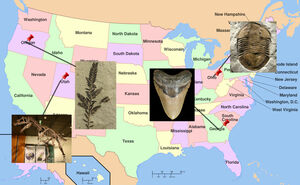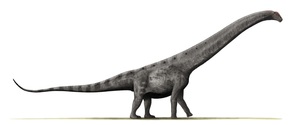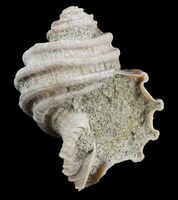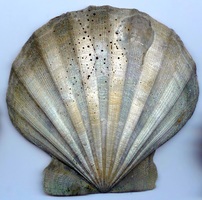New York State Fossil - Sea Scorpion (Eurypterus remipes)
In 1984 the New York state legislature designated Eurypterus remipes a type of Eurypterid, more commonly known as a sea scorpion as the New York state fossil.
Eurypterus remipes lived along the bottom of the shallow, brackish sea that covered much of New York during the Silurian Period, approximately 420 million years ago. Eurypterus averaged at about 5 to 9 inches in length though other types of Eurypterids could reach a whopping 8 feet in length. It’s body consisted of a horseshoe crab like shell head, segmented body and a tail-like appendage called a telson. They had six pairs of appendages under the shell of the head and eyes above. The first set of appendages were modified into pincers for getting food to the mouth. The remaining sets were used for locomotion. The last set of appendages were either wide and flat like paddles for swimming or long and thin like legs for walking.
The first fossils of Eurypterus was found in 1818 by S. L. Mitchill in the Bertie Formation near Westmoreland in Oneida County. Mitchill first thought to be a fossil catfish and wasn’t correctly identified as an arthropod until years later.
Despite being commonly called sea scorpions they were only distantly related to modern day scorpions. Eurypterids were aquatic while scorpions are terrestrial. Perhaps the biggest differences are in the tail and pincers. The tail of the Sea Scorpion resembles the stinger of a scorpion but was not used to deliver venom. The pincers of the Sea Scorpion are the first set of appendages under the shell while a scorpion’s pincers are the second set of appendages. Relationship between Eurypterid and the first terrestrial arachnids is not well understood, but it’s believed the horseshoe crab is probably the closest, modern day relative.
Eurypterids were carnivores. It is likely they ate whatever they could safely subdue, fish, invertebrates, etc. Fossilized Eurypterid coprolites (feces) have been found and contained Trilobite and Eurypterid shells, indicating that they were also cannibalistic. It is likely that Eurypterids were among the apex predators of the environments they inhabited.
Eurypterus remipes lived along the bottom of the shallow, brackish sea that covered much of New York during the Silurian Period, approximately 420 million years ago. Eurypterus averaged at about 5 to 9 inches in length though other types of Eurypterids could reach a whopping 8 feet in length. It’s body consisted of a horseshoe crab like shell head, segmented body and a tail-like appendage called a telson. They had six pairs of appendages under the shell of the head and eyes above. The first set of appendages were modified into pincers for getting food to the mouth. The remaining sets were used for locomotion. The last set of appendages were either wide and flat like paddles for swimming or long and thin like legs for walking.
The first fossils of Eurypterus was found in 1818 by S. L. Mitchill in the Bertie Formation near Westmoreland in Oneida County. Mitchill first thought to be a fossil catfish and wasn’t correctly identified as an arthropod until years later.
Despite being commonly called sea scorpions they were only distantly related to modern day scorpions. Eurypterids were aquatic while scorpions are terrestrial. Perhaps the biggest differences are in the tail and pincers. The tail of the Sea Scorpion resembles the stinger of a scorpion but was not used to deliver venom. The pincers of the Sea Scorpion are the first set of appendages under the shell while a scorpion’s pincers are the second set of appendages. Relationship between Eurypterid and the first terrestrial arachnids is not well understood, but it’s believed the horseshoe crab is probably the closest, modern day relative.
Eurypterids were carnivores. It is likely they ate whatever they could safely subdue, fish, invertebrates, etc. Fossilized Eurypterid coprolites (feces) have been found and contained Trilobite and Eurypterid shells, indicating that they were also cannibalistic. It is likely that Eurypterids were among the apex predators of the environments they inhabited.
 Reviews
Reviews







